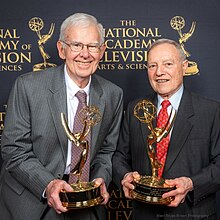Peter L. P. Dillon
[3] KRL had already begun research related to charge coupled devices (CCDs), which were invented in the late 1960s at Bell Labs.
[2] Dillon then invented an alternative CFA pattern, with a green checkerboard, and blue color values on each line.
[10] He used this pattern for the color CCD sensor (shown in the below figure) in the single chip camera he developed[2] In order to develop a color filter array fabrication process which was compatible with semiconductor fabrication processes, Dillon collaborated with his Kodak colleague, KRL Physical Chemist Albert Brault.
[3] Brault invented a process using dye sublimation through photoresist windows onto a receiving polymer layer that was coated on top of the pixels of a CCD image sensor during the wafer fabrication stage.
[14] Dillon is responsible for another important video camera technology, which extends the range of operation at low light levels.
4,016,597,[15] Dillon and his KRL colleague Jim DePalma recognized that integral color image sensors are sensitive to infrared (IR) wavelengths.
[16] They demonstrated that, by automatically removing the IR blocking filter at very low light levels, the sensitivity could be significantly increased to produce acceptable monochrome images.
[3][18] In 2022, they received the IEEE Masaru Ibuka Consumer Electronics Award for “Contributions to the development of image sensors with integrated color filter arrays for digital video and still cameras".



